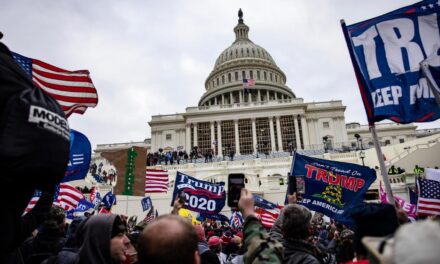
John Roberts sides with the liberals on mail-in voting but things may change once Barrett arrives
Roberts’ vote on Monday night, in a ballot dispute in the battleground state of Pennsylvania critical to President Donald Trump’s reelection bid, led to a 4-4 Supreme Court deadlock. That left in place a Pennsylvania court decision allowing mailed ballots to be counted up to three days after Election Day, despite familiar yet unfounded claims from Republicans regarding “the taint of” illegal ballots.
It was not the first time Roberts, a 2005 appointee of Republican George W. Bush, has moved left in a highly charged partisan case to cinch the outcome, but it may be one of the last.
The Supreme Court is on the cusp of a transformation, less one week before it likely sees the addition of a conservative jurist, Amy Coney Barrett, and two weeks before a presidential election. Barrett, 48, has a record and approach to the law that puts her to the far right of the 65-year-old Roberts.
Trump, whose reelection fate may hinge on legal rulings, called the court’s action on Pennsylvania “ridiculous” and “very strange” in an interview on “Fox & Friends” Tuesday morning.
The President has said he wants Barrett on the court in time to resolve any major election case. “I think this will end up at the Supreme Court,” he said last month of the presidential contest. “And I think it’s very important that we have nine justices.”
The Supreme Court’s brief order Monday night, with no explanation of its legal reasoning, belied the dramatic role of the chief justice and the likely internal turmoil that preceded it. The court had been grappling with the state GOP’s emergency request to block the Pennsylvania Supreme Court decision for two weeks. Democrats, defending the deadline extension and urging the justices not to intervene, highlighted the pandemic-driven demand for mail-in ballots and postal delays.
That Barrett is waiting in the wings may accelerate Roberts’ long-held concerns about the institutional reputation of the bench. Trump continues to undermine the independence of the federal judiciary with his rhetorical attacks, and new possible threats have arisen from the other side, as some liberals advocate adding more seats to the court — at nine for the past 150 years — to try to diminish its lopsided conservatism.
On Monday night, Justices Clarence Thomas, Samuel Alito, Neil Gorsuch and Brett Kavanaugh dissented. Joining Roberts were the three remaining liberal justices, Stephen Breyer, Sonia Sotomayor and Elena Kagan.
Unprecedented control
Until the September 18 death of Justice Ruth Bader Ginsburg, Roberts had presided over a 5-4, conservative-liberal bench and sat at the center of the ideological spectrum. That gave him unprecedented control.
Despite his entrenched right-wing views dating to his work in the Reagan administration, Roberts developed a pattern of leaving the fold in highly visible, politically drenched cases. His actions reinforced his own assertion that justices cannot be defined by the president who appointed them.
That pattern counteracted the Trump message that any “Obama judge” or other Democratic appointee would automatically rule against his interests and anyone he appointed to the bench would be on his side.
In 2012, Roberts cast the decisive vote with the four liberals to uphold the Affordable Care Act, the signature domestic initiative of President Barack Obama. More recently, in 2019, he provided the fifth vote to block Trump’s plan to add a citizenship question to the 2020 census.
In June, he spurned the Trump plan to end immediately an Obama initiative that shielded from deportation young immigrants, known as “Dreamers,” who had come to the country without proper documentation with their parents.
All of those Roberts’ opinions drew Republican wrath, and Monday night’s action leaving in place a Pennsylvania Supreme Court decision was no different.
Yet, in this tumultuous period as Trump fights a challenge for the White House from former Vice President Joe Biden, there may be a difference.
Roberts did not explain his thinking. (None of the justices did.) So, for other state ballot disputes marching toward the high court, the chief justice has not locked himself into any legal stance regarding state ballot procedures.
The canny Roberts is known for foreseeing cases headed to the high court and keeping his options open. And his overall 15-year record on voting rights is anything but liberal. He authored the 2013 Shelby County v. Holder decision that gutted a crucial section of the 1965 Voting Rights Act requiring states with a history of discrimination to obtain federal approval for any new voter-ID rule, redistricting map or other electoral change that could affect individuals’ right to vote.
Last April, in a Wisconsin case as the coronavirus pandemic was growing, Roberts voted with the familiar conservative bloc to refuse to extend a deadline with absentee ballots. That time, Democrats, as well as dissenting liberal justices, declared the majority had undermined the franchise, especially for racial minorities, the poor and elderly.
Another ballot dispute from the Wisconsin — a battleground state of the caliber of Pennsylvania — is now pending before the justices.
The Barrett effect
Confounding predictions of the Roberts Court role in any major lawsuit arising from the current presidential election would be a new Justice Barrett. The Senate Judiciary Committee is scheduled to vote on Barrett this Thursday and a full Senate vote could come as soon as next Monday, just over a week before the election.
Her judicial philosophy is deeply conservative, but she has voted on scant election cases as a judge for the past three years on the Chicago-based 7th US Circuit Court of Appeals.
As a young lawyer, Barrett worked on the country’s last major election fight, the 2000 Bush v. Gore case, on the side of Bush. So did Roberts and Kavanaugh.
Cases like Bush v. Gore, Roberts told senators when he was before them in his 2005 confirmation hearings, “don’t come along all that often.”
But, as he declined to answer whether he believed the justices should have intervened in that Florida-based dispute, the prescient Roberts asserted, “I do think that … the propriety of Supreme Court review in matters of disputed electoral contests is a matter that could come up again.”


















